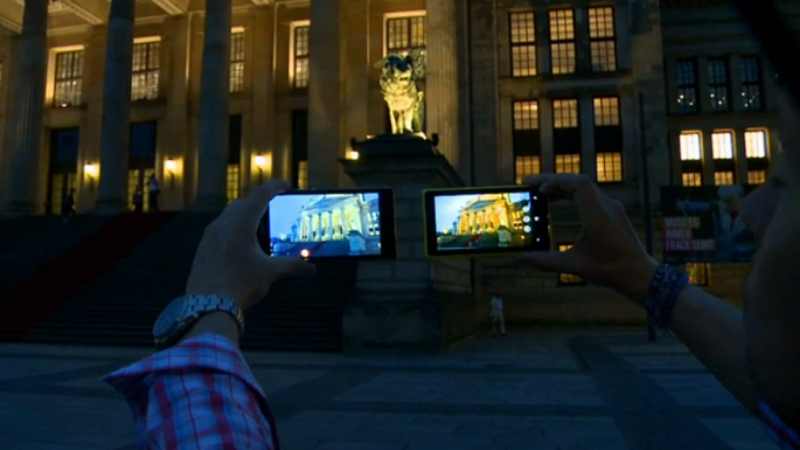The video is here, with the intro from the BBC:
Nokia's Lumia 1020 has gone on sale in the UK.
The Windows Phone handset is distinguished by its 41 megapixel camera, which the firm says captures more detail than any other handset has done before.
But the phone faces a challenge for super-shooter supremacy from Sony.
The Japanese firm's Android-powered Xperia Z1 comes out later this month. Its image sensor has about half the number of megapixels, but Sony claims it produces better photos.
BBC Click's Dan Simmons road tested both ahead of their release to see how they compared.
The 1020's 'zoom later' is demonstrated well, as is the manual focus, though Dan went overboard in pushing the shutter speed adjustment too far when trying to artily shoot a fountain(!)
The Android-running Z1 also gets a decent crack at the whip, with its high speed electronic shutter allowing a number of burst mode and pre-capture functions. Somewhat curiously, Dan also rolls in a look at the QX10 Sony accessory, essentially a standalone camera which clips onto the back of the Z1 and which communicates via Wi-fi. Maybe it's just me, but the thought of having to buy, charge, carry and micro-manage a standalone accessory just to give me slightly better photos seems crazy. Far better to have everything built into the sleek smartphone, etc. (whether Z1 or 1020).

The low light comparison near the end of the video perhaps shows off the main differences between the Lumia 1020 and Z1 as far as casual observers will be concerned: the photos from the 1020 look more detailed and more colourful (helped by the CBD AMOLED screen, to some degree), while everything on the Z1 looks somewhat 'washed out'.
You can see the video here.
